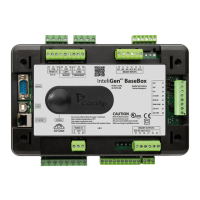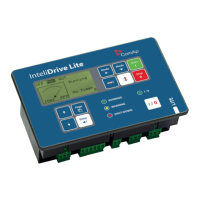IGS-NT Combi, SW Version 3.0, ©ComAp – May 2013
IGS-NT-Combi-3.0 Reference Guide.PDF
This input is used to disable temporarily evaluation of the alarms caused by
cylinder temperatures deviations.
NOTE:
For IS-NT only.
Binary input: ECU StoppedEng
When this input is activated, the genset will be stopped immdiately without
unloading and cooling phase, however no alarm will be issued.
This input is intended for situations, where the genset is controller by an ECU or
other device which also includes engine protections and can stop the engine itself.
In such case the controller would issue an Underspeed alarm. Connecting this
input to an appropriate ECU output, which provides information, that the engine
has been stopped by the ECU, prevents the controller from issuing the
underspeed alarm.
Binary input: CtrlHBeat sens
This input is used at a redundant controller to sense the "heart beat" from the
main controller. The input is to be connected to the output CtrlHeartBeat of the
main controller.
If the redundant controller does not sense the heart beat from the main one, it will
activate the binary output CtrlHBeat FD, which has to be wired such a way, that it
disconnects the dead main controller from the genset, connects the redundant
controller instead and activates it.
NOTE:
Learn more about redundancy in separate chapter Redundant controllers.
Binary input: Nominal speed
Use this input to bypass the idle phase of the start-up procedure.
NOTE:
The input is especially designed for shortening of the start-up procedure when the
gen-set is starting to an AMF operation.
Binary input: ForceValueIn 1
This input activates the Force value #1 block. If the input is active, the value of the
setpoint, to which the Force value #1 block is configured, will be overriden by value
of the alternative setpoint assigned to the Force value #1 block.
NOTE:
If there are more than one force value blocks configured onto one setpoint then the
highest priority has the block with the lowest index (i.e. the first active block

